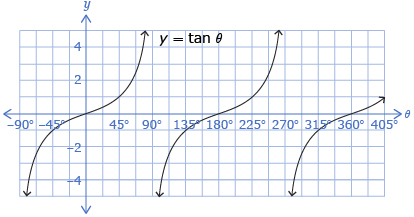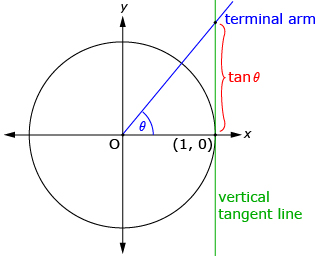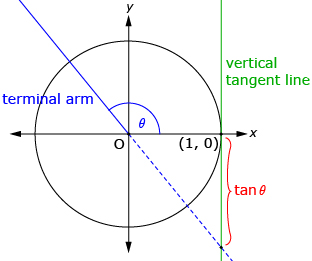Lesson 1
1. Lesson 1
1.5. Explore
Module 5: Trigonometry Applications and Identities
Explore
In Try This 1 you plotted the graph of a tangent function that should have looked like the first diagram that follows. The tangent function can be defined as the y-coordinate of the intersection of the terminal arm and a vertical line tangent to the right side of the unit circle as shown in the second and third diagrams.

When the terminal arm is in quadrant 1 or quadrant 4, the intersection of the terminal arm and the vertical tangent is used to find y. |
When the terminal arm is in quadrant 2 or quadrant 3, an extension of the terminal arm is used to find the intersection with the vertical tangent. |
In Try This 2 you will explore some characteristics of the tangent function.
Try This 2
- Using technology, graph the function y = tan x over the domain −4π< x < 4π.
- Sketch the graph of y = tan x. Draw in the vertical asymptotes.
-
- Determine when tan x = 0.
- Write a general equation to represent all the real values of x that make tan x = 0.

- The graph of y = tan x is not defined for all x values and includes vertical asymptotes.
- At what x values do asymptotes occur?
- Write a general equation to represent all the asymptotes of y = tan x over the real numbers.

- Determine the period of y = tan x. How does this compare to the period of y = sin x or y = cos x?
- Determine the domain and range of y = tan x. How do these sets of values compare to the domain and range of y = sin x or y = cos x?
- Determine the amplitude of tan x. What problem do you notice when attempting to determine this amplitude?
![]() Save your answers in your course folder.
Save your answers in your course folder.
Your equation can be of the form x = __ + __ π, n ∈ I.
Your equation can be of the form x = ____ π, n ∈ I.

